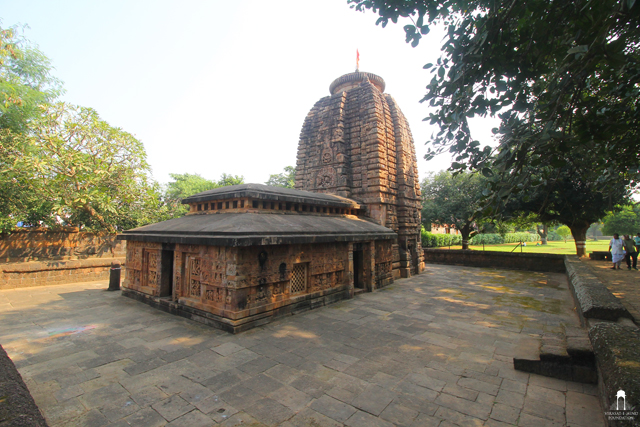BHUBANESWAR: The temples of Bhubaneswar have been influenced by many things, and one of them is the Pashupata cult that has left its mark on many of them.
One particular sculpture which has never failed to fascinate historian Jitu Mishra is Lakulisha, a Shaivite teacher, who closely resembles Gautama Buddha.
There are no followers of this ascetic cult now in Bhubaneshwar. In fact, today’s youth may find it hard to believe that once scores of Shaivite monks roamed the city’s streets covering their bodies with ash, singing loudly the praises of their lord, dancing, curling their tongue and roaring like bulls. Some sculptural panels and medieval temples are the only trace of this ancient cult left.
Speaking to Orissa Post, Mishra said, “The 7th century heralded an era of temple building in Bhubaneshwar. It was an interesting time in history as dynasties like the Mauryas and the Guptas no longer existed and there was no pan Indian empire, but thanks to their contributions in uniting India, there was a high degree of mobility among people from north to south and east to west. This led to the proliferation of cross-cultural ideas which eventually created the foundation of India.”
Bhubaneshwar, situated in the heart of the Kalinga kingdom, had become a melting pot of ideas with influences from north, south, east and west. The introduction of the Lakulisha cult around this time stands testimony to this.”
According to temple history, Lakulisha, which means the club bearing deity, is portrayed in the temples of Bhubaneswar seated cross-legged in the dharma-chakra-pravartana mudra with a stick held in one arm. He is either single or has four disciples – Karushya, Garga, Mitra and Kushika.
Lakulisha, a Brahmin from Kayavarohan near Vadodara in Gujarat, was the founder of the Pashupata sect of Shaivism which finds mention in the Mahabharata.
According to Vayu Purana and Linga Purana, Shiva said that he would appear on earth during Vishnu’s incarnation as Vasudeva (Krishna). Shiva indicated that he would enter the body of a Brahmin and incarnate himself as Lakulin (or Nakulin or Lakulisha. Lakula means ‘club’).
Some historians and archaeologists say that Shaivism is a pre-Aryan cult and its origin can be traced to the Indus Valley civilisation. However, with the spread of Vedic religion, Shaivism lost its importance.
Considered the 28th incarnation of Shiva, Lakulisha revived and propagated the ancient cult of Pashupati worship. He brought Shaivite sects under the umbrella of Pashupata, meaning the followers of Pashupati, the Lord of Beasts.
Lakulisha opposed Vedic religion, Jainism and Buddhism. He is also said to have restored the practice of Hatha Yoga and Tantrism.
Pashupata Shaivism was an ascetic movement and its followers were required to give up worldly affairs by practicing Pashupatavrata. Their path was tough, and it aimed at eliminating the ego and annihilating the physical self for nourishing the spirit.
Pashupata Sutra says a Pashupata Yogi must appear as a lunatic or beggar, with his body dirty, beard grown, with long hair and nails, with no care whatsoever for the body. The devotee cuts his or her desires for worldly fortunes and goodies through this.
